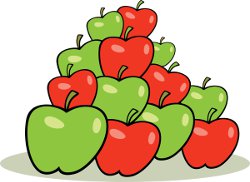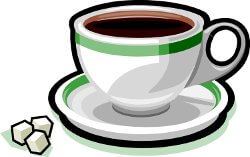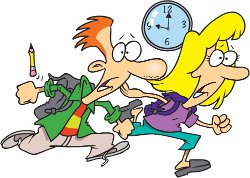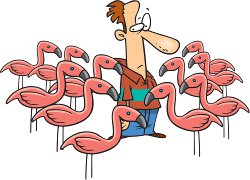Quantifiers
Quantifiers are types of English determiners that tell us the number of nouns.
Quantifiers "quantify" the noun. They tell us how much or how many.
Click Here for Step-by-Step Rules, Stories and Exercises to Practice All English Tenses
A quantifier always comes before a noun and modifies the noun.
To understand the rules for using quantifiers, you must first understand
 countable and
uncountable nouns.
countable and
uncountable nouns. Countable nouns are things that can actually be counted.
- 1 foot
- thirteen apples
- 2 dogs
- twenty-five children
Uncountable nouns are things that cannot be counted or made plural. They are usually substances, emotions, and ideas.
- water
- sugar
- sadness
- grammar
Using Quantifiers
Some quantifiers can only be used with singular or plural countable nouns.Some quantifiers can only be used with uncountable nouns.
Some quantifiers can be used with countable and uncountable nouns.
Here is a chart showing some common quantifiers and their uses.
| Quantifier | Used with singular countable nouns? | Example | Used with plural countable nouns? | Example | Used with uncountable nouns? | Example |
| a lot of lots of |
No | Yes | a lot of dogs | Yes | a lot of sugar | |
| all | No | Yes | all dogs | Yes | all the sugar | |
| any | Yes | any dog | Yes | any dogs | Yes | any sugar |
| both | No | Yes | both dogs | No | ||
| enough | No | Yes | enough dogs | Yes | enough sugar | |
| every | Yes | every dog | No | No | ||
| few/a few/fewer | No | Yes | few dogs | No | ||
| less | No | Yes | less dogs | Yes | less sugar | |
| little/a little | No | No | Yes | a little sugar | ||
| many | No | Yes | many dogs | No | ||
| most | No | Yes | most dogs | Yes | most sugar | |
| much | No | No | Yes | much sugar | ||
| no | Yes | no dog | yes | no dogs | Yes | no sugar |
| none of | No | Yes | none of the dogs | Yes | none of the sugar | |
| several | No | Yes | several dogs | No | ||
| some | No | Yes | some dogs | Yes | some sugar |
A) Quantifiers can be placed right before a noun
Examples:
- The zoo has a
few giraffes.
- No animals are allowed in my house!
- I like some
sugar in my tea.
- None of the teachers were there.
- Every student should arrive on time.
B) Quantifiers can be placed in a noun phrase before adjectives and the noun
Examples:
- Mrs. Smith has enough
blue
paper for everyone.
- A
lot of small, brown
mice live under the wood pile.
- Do you have any
spicy
green peppers?
- Both
beautiful
blonde
girls are hers.
- We have enjoyed every single
moment with you!
- Bob is surrounded by several funny pink flamingos.
D) We sometimes use two quantifiers together
These quantifiers are
sometimes used together:
Examples:
Examples:
- Do you have
a few
more
eggs for my recipe?
- The baby wakes up every few hours
at night.
- Please read
that part with a
little more
expression.
- Put a
little less
sugar in my cup of tea.

E) Sometimes quantifiers are used as pronouns
A pronoun is a word that is used in place of a noun.
We may use quantifiers in place of nouns when the noun has already been identified.
(The bold sentences use quantifiers as pronouns.)
Examples:
- Tom is surrounded by flamingoes.
All are pink.
None are blue.
Half are in his front yard.
- Students should arrive on time.
Some were late today.
Many were early.
A few stayed home.
These were the rules and uses of Quantifiers. Now that you know them, it is time to practice! Get our ESL Books.
Get Updates, Special Offers, and English Resources
Download your FREE GIFT (the first two chapters of
English Short Stories Book and Workbook)
as soon as you join!

By submitting your email, you consent to receiving updates and newsletters from us and to the sharing of your personal data with third parties for the purposes of sending you communications. We will not spam you. You can unsubscribe at any time. For more information, please see our privacy policy.







